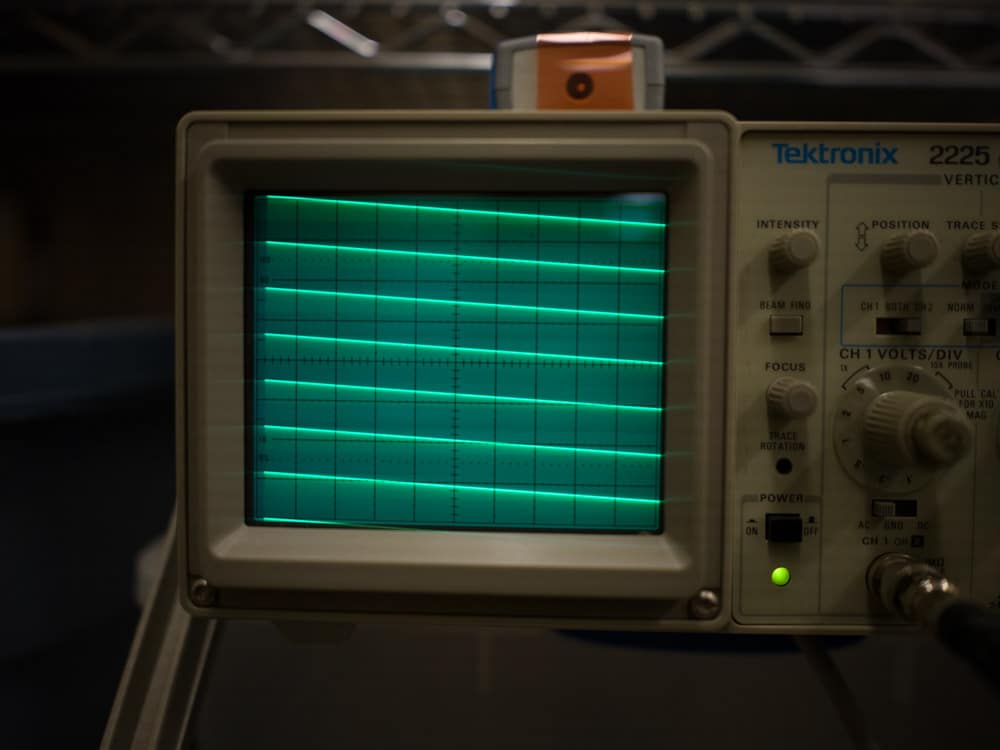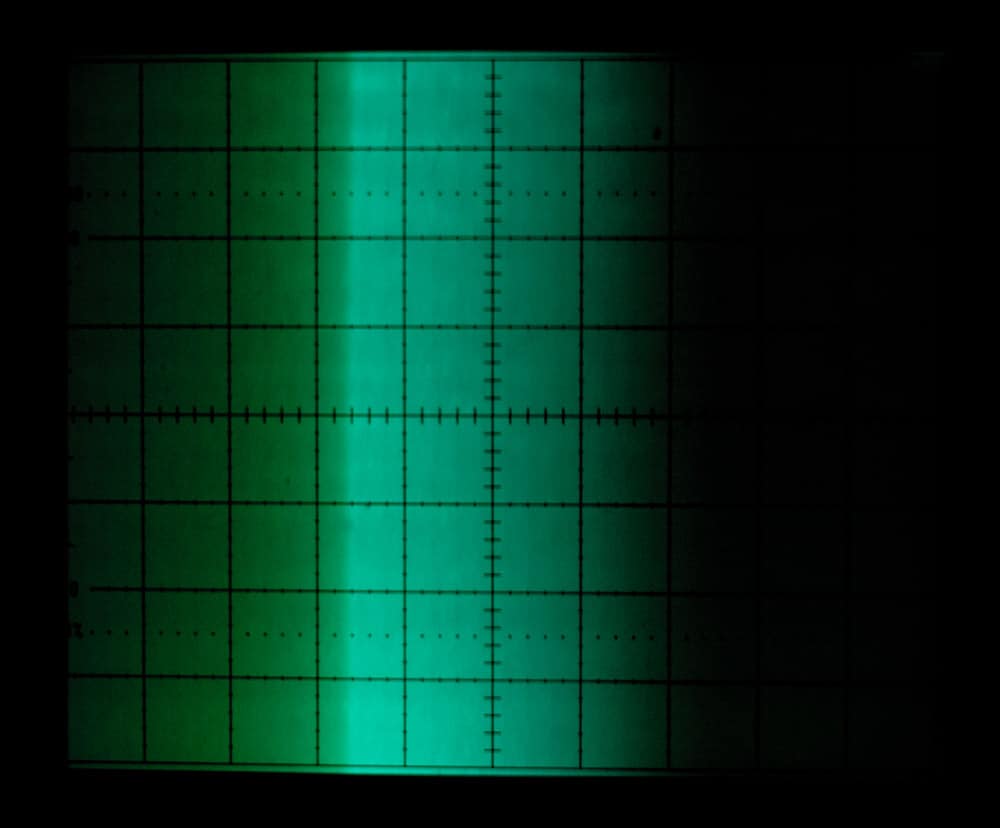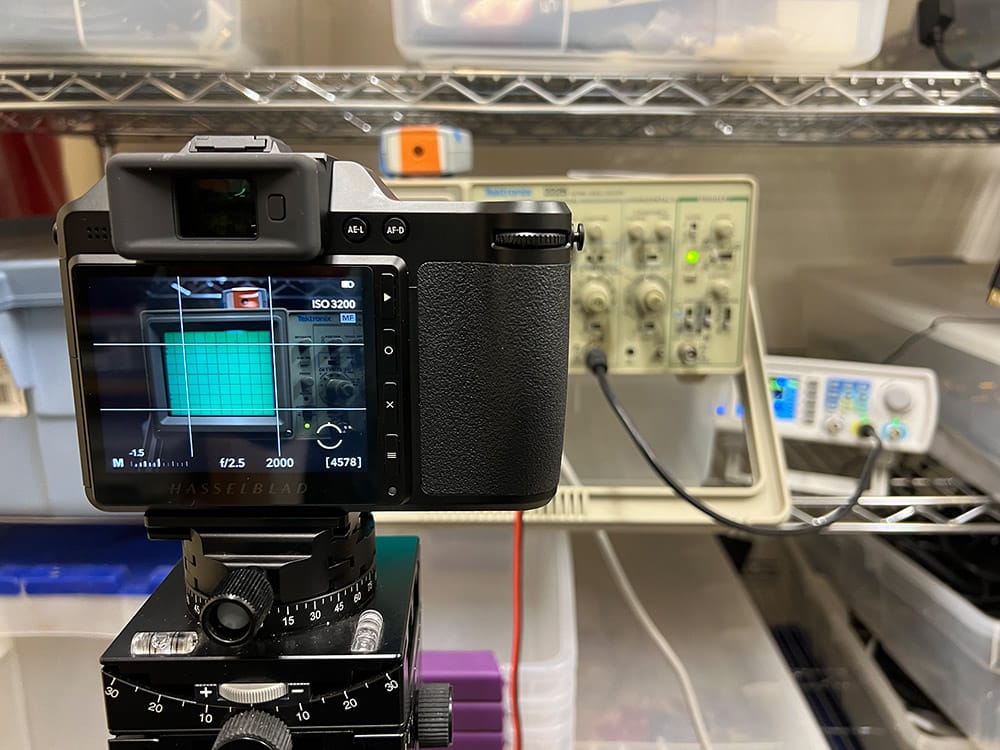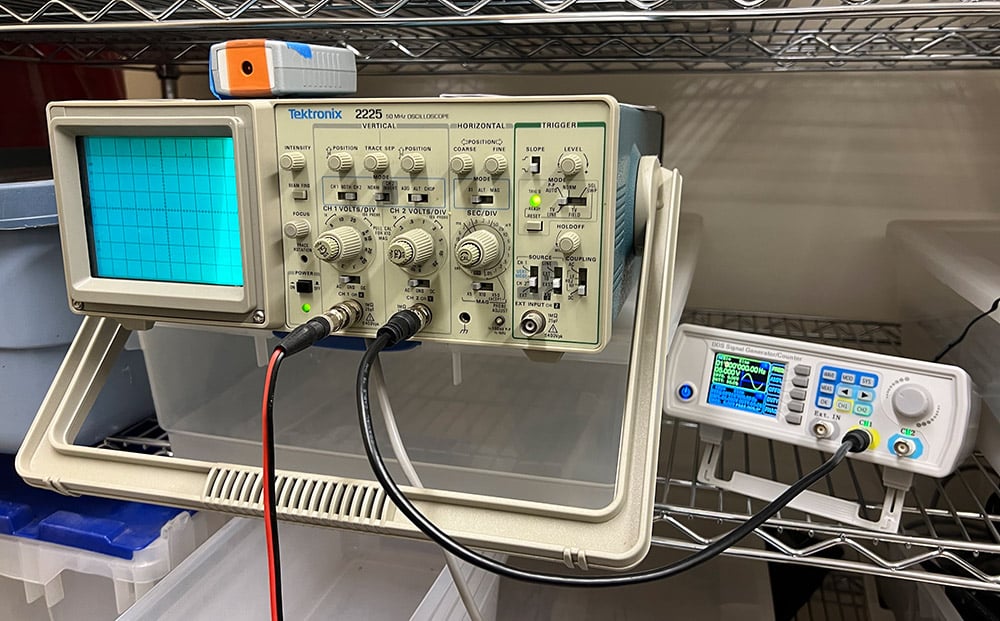This is the 14th in a series of posts on the Hasselblad X2D 100C camera and the XCD lenses. You will be able to find all the posts in this series by looking at the righthand column on this page and finding the Category “X2D”.
In the previous post I looked at the performance of the Hasselblad X2D electronic shutter, and found it essentially the same as the electronic shutter in the GFX 100 and GFX 100S. In this one, I’ll consider the dynamics of the mechanical shutter in the XCD 38 lens when mounted to that camera.
I’ll do this by photographing an analog oscilloscope — this won’t work with a digital ‘scope — which has as its vertical input a 1 MHz sine wave.
Here’s the setup:
Here’s what you see at 1/2000 second with the electronic shutter and the x-axis set to 1 millisecond per division.

The shutter takes a long time to scan. See the previous post for how long.
With the XCD aperture wide open, mechanical shutter selected, and the x-axis set to 200 microseconds per division, here’s what a crop looks like:

Earlier time is on the left. You can see that the shutter opens suddenly, scanning from the bottom of the image (top of sensor) to the top of the image (bottom of sensor) in about 40 microseconds. You get 200 milliseconds of fairly wide open shutter, Then there’s another 500 milliseconds of gradually fading illumination. All told the average illumination is what you’d get with a sudden start and stop to a 1/2000 second exposure, but the time elapsed during the exposure is longer than that.
It seems likely that the camera is resetting the sensor when the shutter blades are open, and thus the time to open the blades doesn’t affect the exposure duration.
I suspect that as the lens is stopped down, more nearly ideal behavior results.


Leave a Reply